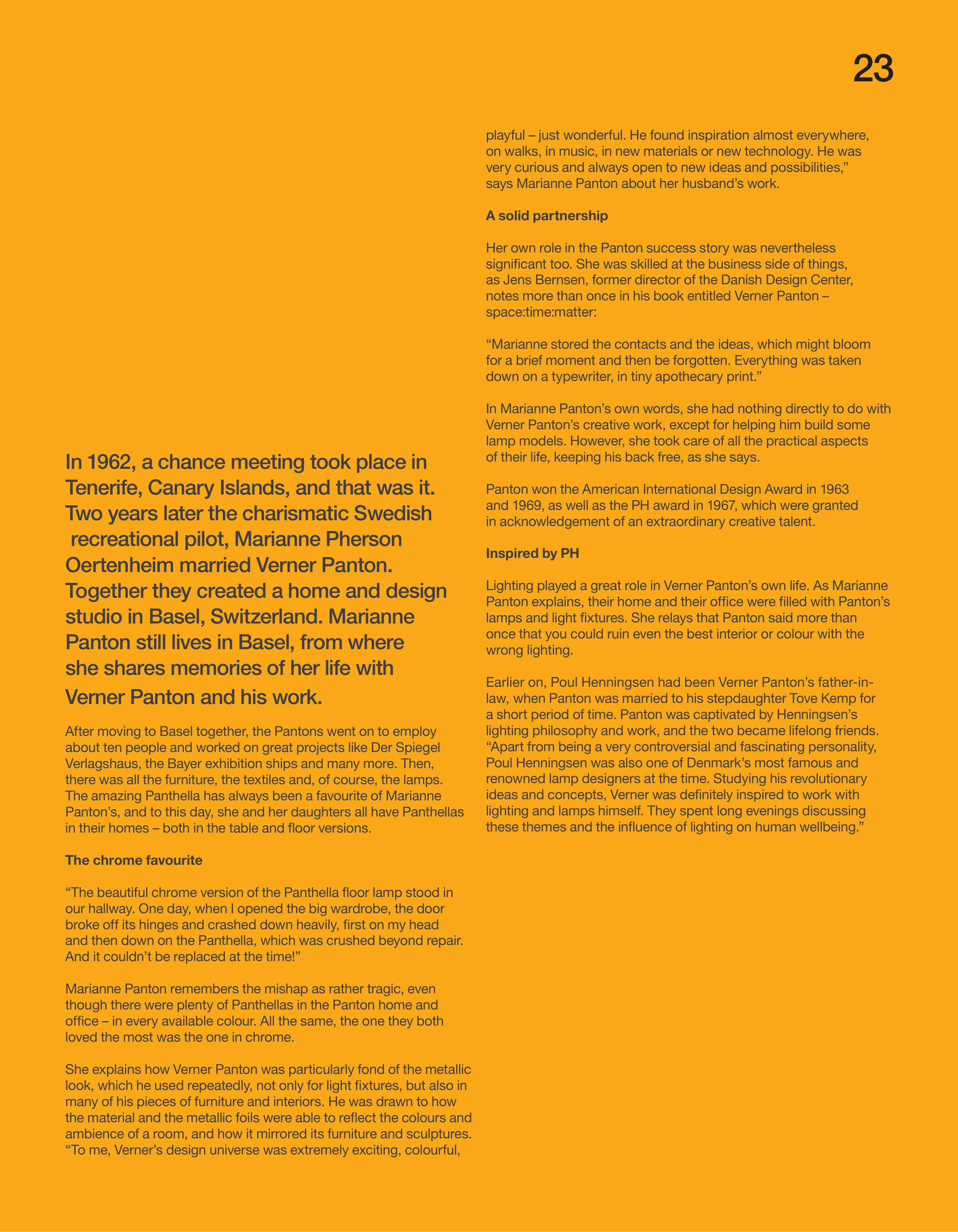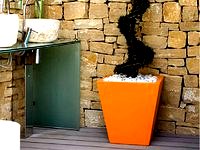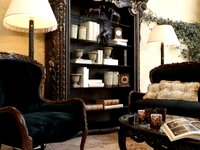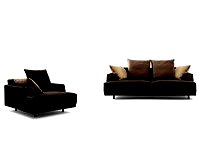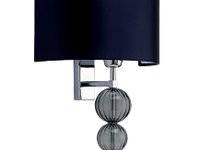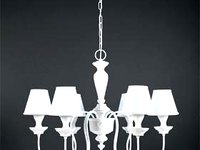In 1962, a chance meeting took place in
Tenerife, Canary Islands, and that was it.
Two years later the charismatic Swedish
recreational pilot, Marianne Pherson
Oertenheim married Verner Panton.
Together they created a home and design
studio in Basel, Switzerland. Marianne
Panton still lives in Basel, from where
she shares memories of her life with
Verner Panton and his work.
After moving to Basel together, the Pantons went on to employ
about ten people and worked on great projects like Der Spiegel
Verlagshaus, the Bayer exhibition ships and many more. Then,
there was all the furniture, the textiles and, of course, the lamps.
The amazing Panthella has always been a favourite of Marianne
Panton’s, and to this day, she and her daughters all have Panthellas
in their homes – both in the table and floor versions.
The chrome favourite
“The beautiful chrome version of the Panthella floor lamp stood in
our hallway. One day, when I opened the big wardrobe, the door
broke off its hinges and crashed down heavily, first on my head
and then down on the Panthella, which was crushed beyond repair.
And it couldn’t be replaced at the time!”
Marianne Panton remembers the mishap as rather tragic, even
though there were plenty of Panthellas in the Panton home and
office – in every available colour. All the same, the one they both
loved the most was the one in chrome.
She explains how Verner Panton was particularly fond of the metallic
look, which he used repeatedly, not only for light fixtures, but also in
many of his pieces of furniture and interiors. He was drawn to how
the material and the metallic foils were able to reflect the colours and
ambience of a room, and how it mirrored its furniture and sculptures.
“To me, Verner’s design universe was extremely exciting, colourful,
playful – just wonderful. He found inspiration almost everywhere,
on walks, in music, in new materials or new technology. He was
very curious and always open to new ideas and possibilities,”
says Marianne Panton about her husband’s work.
A solid partnership
Her own role in the Panton success story was nevertheless
significant too. She was skilled at the business side of things,
as Jens Bernsen, former director of the Danish Design Center,
notes more than once in his book entitled Verner Panton –
space:time:matter:
“Marianne stored the contacts and the ideas, which might bloom
for a brief moment and then be forgotten. Everything was taken
down on a typewriter, in tiny apothecary print.”
In Marianne Panton’s own words, she had nothing directly to do with
Verner Panton’s creative work, except for helping him build some
lamp models. However, she took care of all the practical aspects
of their life, keeping his back free, as she says.
Panton won the American International Design Award in 1963
and 1969, as well as the PH award in 1967, which were granted
in acknowledgement of an extraordinary creative talent.
Inspired by PH
Lighting played a great role in Verner Panton’s own life. As Marianne
Panton explains, their home and their office were filled with Panton’s
lamps and light fixtures. She relays that Panton said more than
once that you could ruin even the best interior or colour with the
wrong lighting.
Earlier on, Poul Henningsen had been Verner Panton’s father-in-
law, when Panton was married to his stepdaughter Tove Kemp for
a short period of time. Panton was captivated by Henningsen’s
lighting philosophy and work, and the two became lifelong friends.
“Apart from being a very controversial and fascinating personality,
Poul Henningsen was also one of Denmark’s most famous and
renowned lamp designers at the time. Studying his revolutionary
ideas and concepts, Verner was definitely inspired to work with
lighting and lamps himself. They spent long evenings discussing
these themes and the influence of lighting on human wellbeing.”
23


